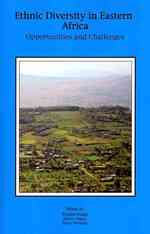- ホーム
- > 洋書
- > 英文書
- > Gardening & Plants
Full Description
This new volume, Biological Assessment of Natural and Anthropogenic Ecosystems: Trends in Diagnosis of Environmental Stress, diverse methods and achievements in assessing the biological state of ecosystems are presented, biochemical, genetic and cytological methods are used, methodological achievements in this area are discussed in this volume. Experimental and practical aspects of the genetic diversity of cultivated plants and its application in modern business conditions are considered. The use of biological indicators for the purpose of protecting nature and practical application is presented. The authors of the book are biologists, biochemists, genetics, and ecologists from prestigious scientific institutions.
This volume explores different types, different plant tissues and intracellular structures for the diagnosis and prediction of anthropogenic effects on living natural systems. Here, scientific information on the bioindication properties of living systems is presented and the theoretical foundations of its study are emphasized.
This authoritative reference source will be a valuable addition for scientific researchers and students working in the field of biology, ecology, genetics, cytogenetics, agronomy and environmental assessment and its protection from anthropogenic destruction. The authors highlight the achievements, problems, and opportunities of biological methods for indicating the environment.
Key features:
Provides an overview of recent events and opportunities in the field of bioindication to control anthropogenic damage of living systems
Considers the screening of new parameters to determine the health status of biological objects from one cell to an entire ecosystem, such as boreal peatlands
Presents the results of a study of the response of plants to abiotic stressors
Demonstrates the importance of role-related research of living objects as bioindicators
Provides new research on various topics of plant resistance to stress
Discusses design methodology, development and law of selection of indicators for specific environmental issues.
Contents
PART I: Bioindication of Natural and Anthropogenic Ecosystems 1. Possibility of Using Cutover Peat Bogs in Bioindication of Environmental State 2. Paleopalinology Studies of Conditions of Peatlands Formation on European Northeast of Russia 3. Use of Artemia salina Biomarkers for the Evaluation of the Effect of Static Magnetic Fields PART II: Genetic Diversity: Experimental Induction and Evaluation of Ecosystems in the Modern Natural Environments 4. Theoretical and Applied Aspects of Mutations Induction for Improving Agricultural Plants 5. Enzymatic Activity of Bacteria Bacillus subtilis: Assessment Using Phosphemidum 6. Cytogenetic Characteristics of Seed Seedlings of Rhododendron ledebourii, Introduced in the Botanical Garden of Voronezh State University 7. Anthropogenic Pollution Influence on the Antioxidant Activity in Leaves and on the Cytogenic Structures in the Seedlings of the Representatives of the Rhododendron Genus 8. Cytogenetic Indices, Germination Ability, and Content of Total Protein in Seed Progeny of Betula pendula from Various Areas of Voronezh City with Different Levels of Anthropogenic Pressure PART III: Diagnosis of Environmental Status and the Adaptive Potential of Plants 9. Photoindication of Plant Nitrogen Nutrition 10. Revegetation and Launching Self-Restoration Process of the Disturbed Landscape Along the Transport Corridor in Western Siberia 11. Pigment Content in Plant Leaves as a Bio-Indicator of Adaptability to Growing Conditions 12. Some Indirect Methods for Predicting the Rooting Ability of Apple Tree (Malus spp) Stem Cuttings








